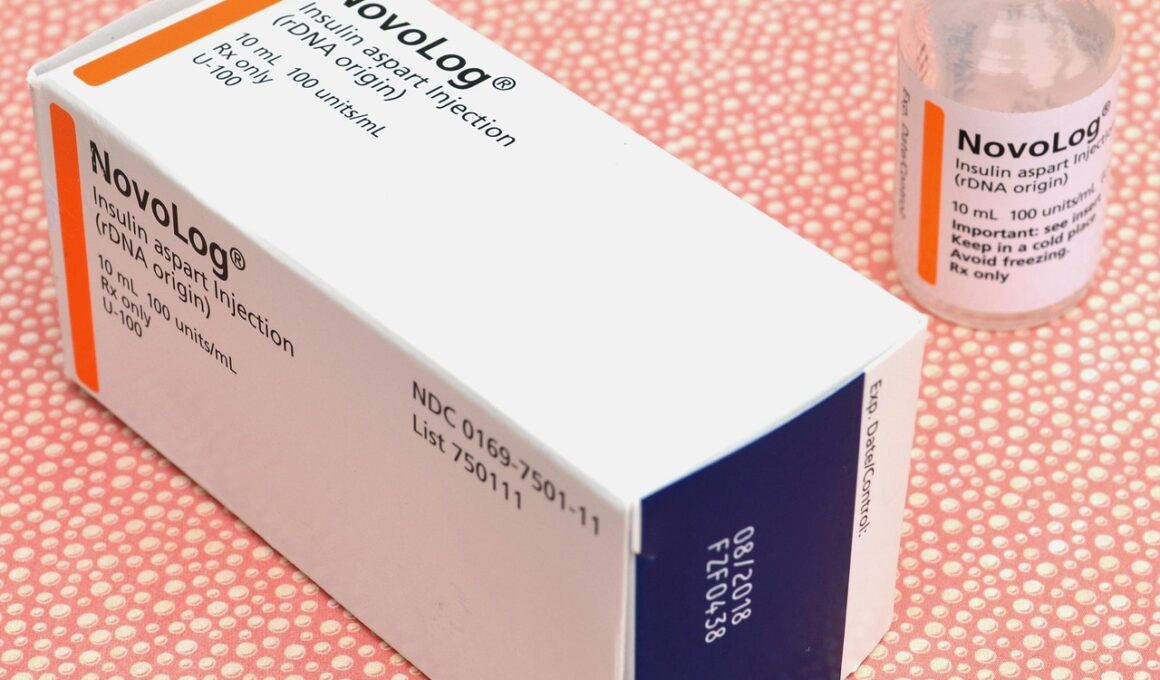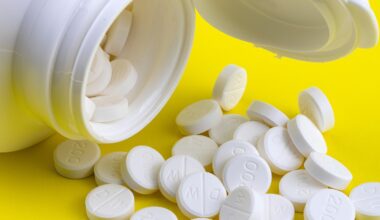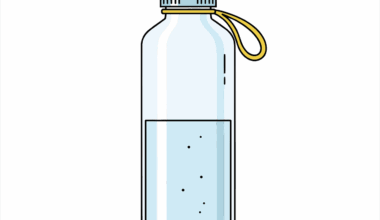Hormonal Responses to High-Intensity Interval Training (HIIT)
High-Intensity Interval Training, commonly abbreviated as HIIT, represents a significant trend in exercise science and fitness regimens. Its efficiency in promoting fat loss, enhancing cardiovascular health, and improving metabolic rate can be largely attributed to its effects on hormonal responses. During HIIT, short bursts of intense exercise are alternated with periods of lower activity or rest. This protocol boosts energy expenditure significantly and creates a unique hormonal environment that differentiates it from traditional endurance exercises. Activating multiple pathways, HIIT stimulates various hormones that are essential for metabolism, fat loss, and muscle growth. Understanding how these hormonal responses play a role in body composition changes can help individuals tailor their training regimens to meet specific goals. As HIIT continues to grow in popularity, researchers are increasingly focused on elucidating the physiological changes that accompany this workout style and how they translate into improved health outcomes. Key hormones, including adrenaline, cortisol, and growth hormone, respond dynamically during HIIT, which can have profound implications on recovery and adaptation. Thus, a closer examination of these hormonal responses is warranted.
The Role of Hormones during HIIT
Hormones act as messengers in the body, influencing numerous physiological processes, particularly during high-stress activities such as HIIT. One of the most critical hormonal responses to HIIT is the increase in catecholamines, specifically adrenaline and noradrenaline. These hormones elevate heart rate, enhance blood flow to muscles, and mobilize fat stores for energy use. Cortisol, known as the stress hormone, also rises during high-intensity efforts, aiding in energy production. Though essential for adapting to stress, chronic elevation of cortisol can lead to negative health outcomes. Furthermore, growth hormone (GH) is significantly stimulated during HIIT, which helps with muscle repair and development post-exercise. This is critical for the enhancement of both strength and endurance. Notably, the acute spikes in GH occur due to the intensity and effort required in HIIT sessions. When the intensity of these workouts is sufficient, they trigger positive hormonal cascades that can increase overall energy expenditure and promote body composition improvements. As a result, understanding these hormonal activities is vital for athletes and fitness enthusiasts aiming for optimal performance.
The interplay of hormones significantly influences recovery after HIIT sessions. Post-exercise, the body enters a recovery phase where various hormones interact to support muscle repair and restore energy levels. Insulin, a key hormone involved in glucose metabolism, plays a crucial role in this process. The elevated insulin sensitivity post-HIIT enhances nutrient uptake in muscle cells, promoting recovery and glycogen restoration. Furthermore, the balance of cortisol after intense workouts is essential. While exercise-induced cortisol spikes are beneficial acutely, prolonged high levels can impede recovery. Hence, managing overall training load and scheduling recovery days is essential to maintaining a healthy hormonal balance. Additionally, testosterone, known for its role in muscle growth and maintenance, can also be affected by HIIT. Regular participation in such workouts may increase baseline testosterone levels in individuals, promoting lean muscle gain and fat reduction. Therefore, effective recovery strategies are crucial not only for performance improvement but also for maintaining an optimal hormonal environment. Training regimens that incorporate ample rest will ultimately lead to better adaptations and overall fitness gains.
The Impact on Metabolism
HIIT not only positively affects hormones but also exerts profound impacts on metabolism. One significant effect of HIIT is the elevation in metabolic rate, known as excess post-exercise oxygen consumption (EPOC). After a HIIT session, the body continues to burn calories at an elevated rate, leading to increased fat loss over time. Research indicates that hormonal changes during HIIT, particularly elevations in catecholamines and growth hormone, play crucial roles in enhancing EPOC. This metabolic boost can last for hours, depending on the intensity and duration of the HIIT workout. Moreover, the hormonal milieu encourages the body to utilize fat for energy, reducing reliance on carbohydrates during subsequent exercise. This adaptation improves overall metabolic flexibility, allowing individuals to switch between burning carbohydrates and fats more effectively. As such, including HIIT in a fitness regimen can be beneficial for those looking to lose weight and improve metabolic health. Understanding the metabolic adaptations resulting from HIIT contributes to optimizing workouts for different goals, ranging from performance enhancement to weight management.
Another significant aspect of HIIT is its impact on body composition through hormonal pathways. HIIT workouts promote fat loss while simultaneously preserving lean muscle mass, largely due to the hormone-regulating properties during and after exercise. This dual benefit is often more pronounced than traditional steady-state cardio. After consistent HIIT training, the increase in muscle mass combined with the reduction of fat leads to a favorable body composition. Hormones like IGF-1 (Insulin-like Growth Factor 1) also see fluctuations that promote muscle hypertrophy post-HIIT. Alongside the growth hormone response, such changes provide optimal conditions for muscle repair and growth after intense training bouts. With cutting-edge insights into hormonal responses, fitness enthusiasts can leverage HIIT for effective changes in body composition, maximizing fat loss while sustaining or increasing muscle mass. Enhancing knowledge of these physiological adaptations allows for improved program design tailored to individual goals, whether for aesthetic enhancement or athletic performance. Ultimately, this comprehensive understanding propels both trainers and individuals towards achieving more meaningful results in their fitness journeys.
Conclusion: Embracing HIIT for Optimal Hormonal Health
In conclusion, High-Intensity Interval Training offers numerous benefits concerning hormonal responses that directly influence health and fitness outcomes. By understanding how the body reacts hormonally during HIIT, individuals can create optimized training programs that align with their goals. The integrated hormonal changes facilitated by HIIT can lead to improved metabolic rates, enhanced recovery, and favorable body composition shifts. Additionally, the unique combination of increased growth hormone and the modulation of cortisol levels can support better muscle repair and overall energy management. For those engaged in fitness, understanding these dynamics is essential in adapting strategies to maximize the advantages of their workouts. HIIT not only develops physical endurance but also optimizes hormonal processes critical for long-term health. Embracing the principles of HIIT allows individuals to harness its effectiveness fully, transforming both body and mind. Future research will continue to unveil the intricate relationships between exercise and hormones, further solidifying HIIT’s place as a cornerstone of contemporary fitness. Ultimately, adapting training based on these hormonal responses can guide individuals on their path to achieving optimal fitness and health improvements.
In addition to hormonal improvements, HIIT emphasizes time-efficiency, making it attractive for busy individuals. Research indicates that effective workouts can be conducted in shorter durations, allowing individuals to fit physical activity seamlessly into their daily routines. As these workouts demand high intensity, even short bursts can yield considerable benefits comparable to longer, traditional exercises. Furthermore, HIIT’s adaptability makes it appealing to a wide audience, from beginners to advanced athletes. Intervals can be tailored to suit various fitness levels and preferences, ensuring inclusivity in training styles. This versatility extends to the choice of exercises as HIIT can incorporate cardio, strength training, or both. Adopting this type of training promotes a more engaging and dynamic approach to fitness, warding off plateaus and monotony. Additionally, as individuals experience and monitor the hormonal benefits resulting from consistent HIIT practices, motivation often increases. This boosts adherence to regular training, forming a positive feedback loop. Therefore, understanding the adaptability and efficiency of HIIT may encourage broader acceptance and continue driving participation in health and fitness communities.
Finally, the community aspect of HIIT should not be underestimated. Often, these workouts are conducted in groups, fostering a sense of camaraderie and social support. Exercising alongside others can elevate motivation levels, making workouts more enjoyable and less isolating. Group HIIT sessions often lead to shared goals and accountability, pushing individuals to achieve new fitness milestones. Furthermore, the shared experience of challenging workouts helps build rapport among participants, enhancing social interactions and well-being. Emotional and motivational boosts associated with communal exercise have proven benefits for mental health, which is a significant component of overall wellness. As HIIT continues to integrate both hormonal and psychological benefits, it stands as a comprehensive approach to fitness. In fact, connecting with a community can reinforce positive behavioral changes that support long-term health and fitness adherence. Moreover, individuals often find increased enjoyment in workouts spent with others, leading to higher participation rates. Overall, the collaborative atmosphere surrounding HIIT not only enhances individual performance but also encourages healthy lifestyle choices, contributing to improved physical and mental health in the community.


